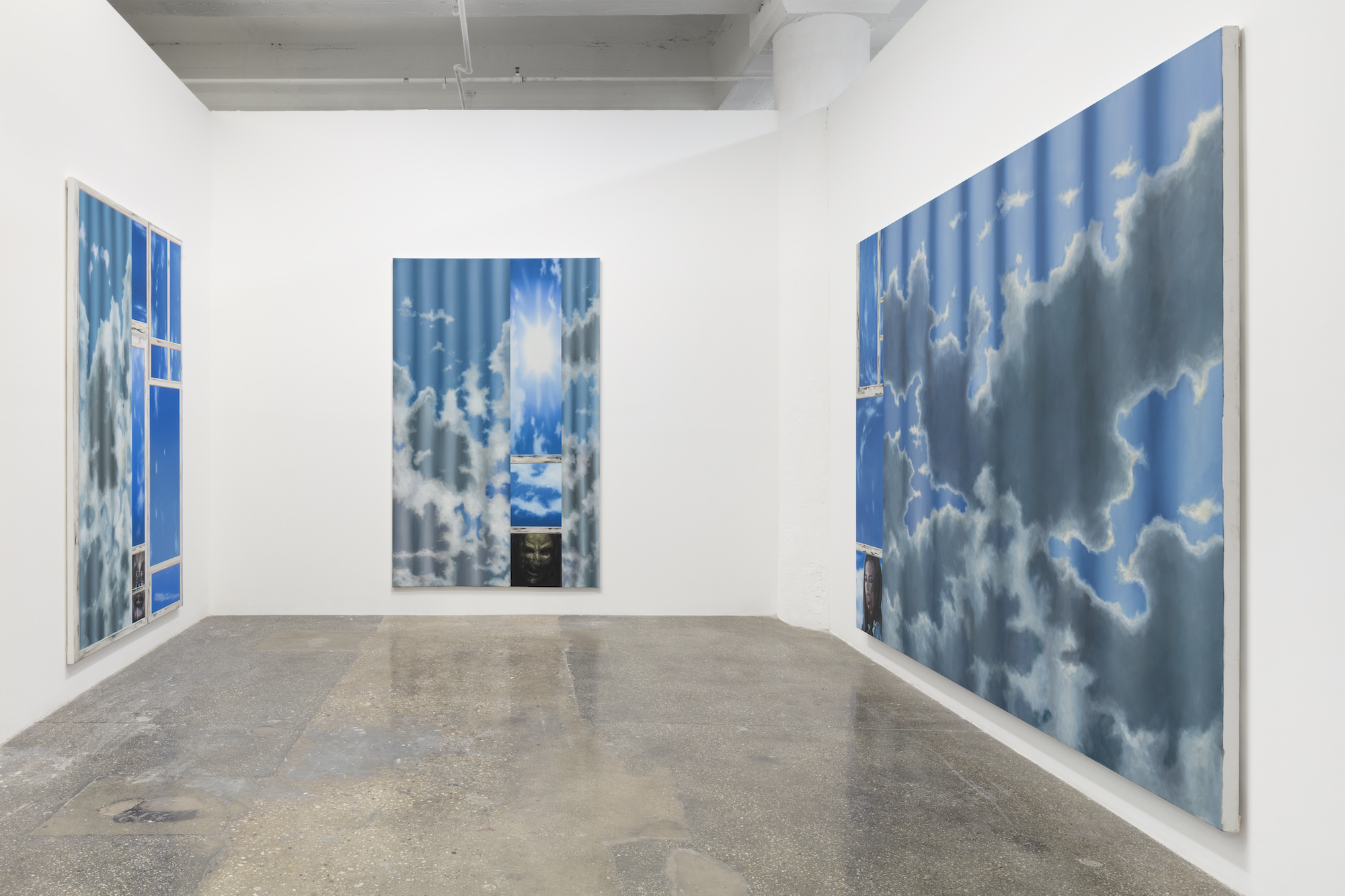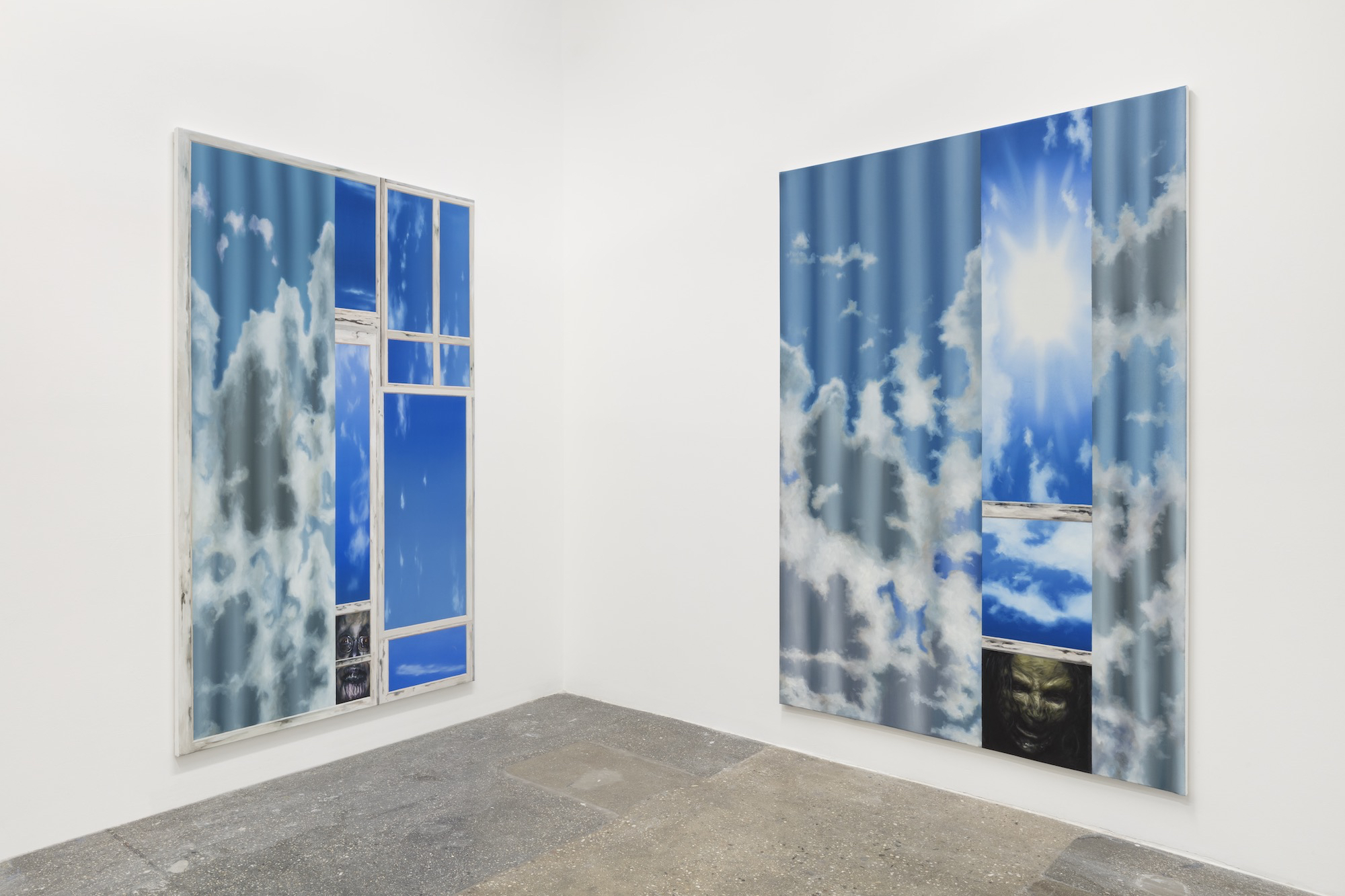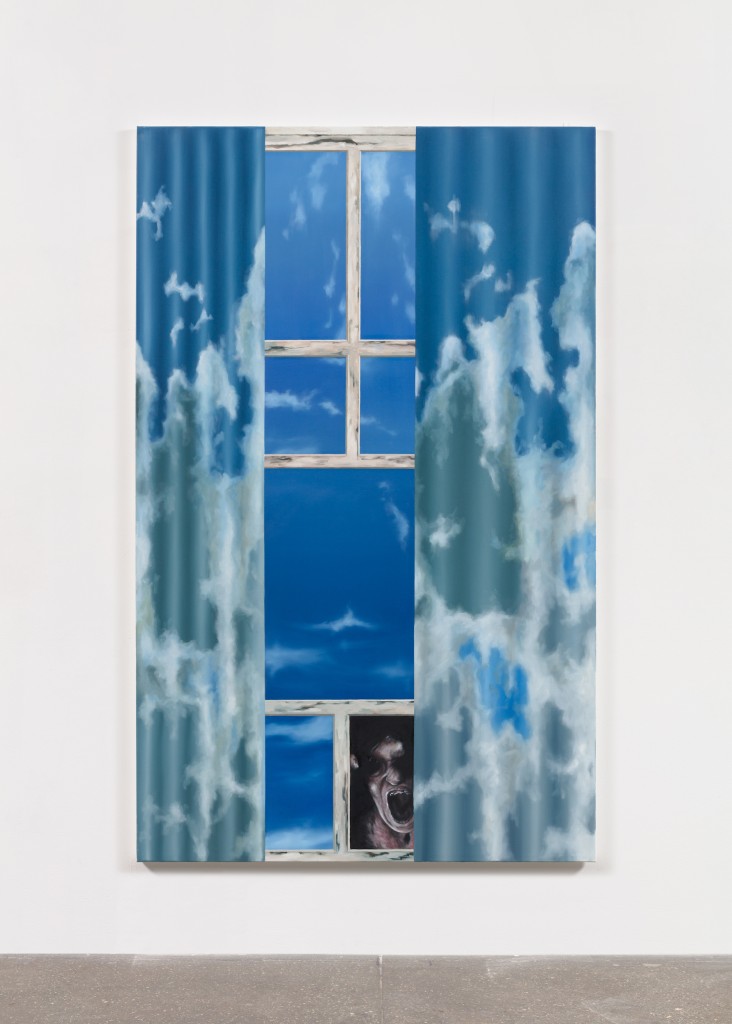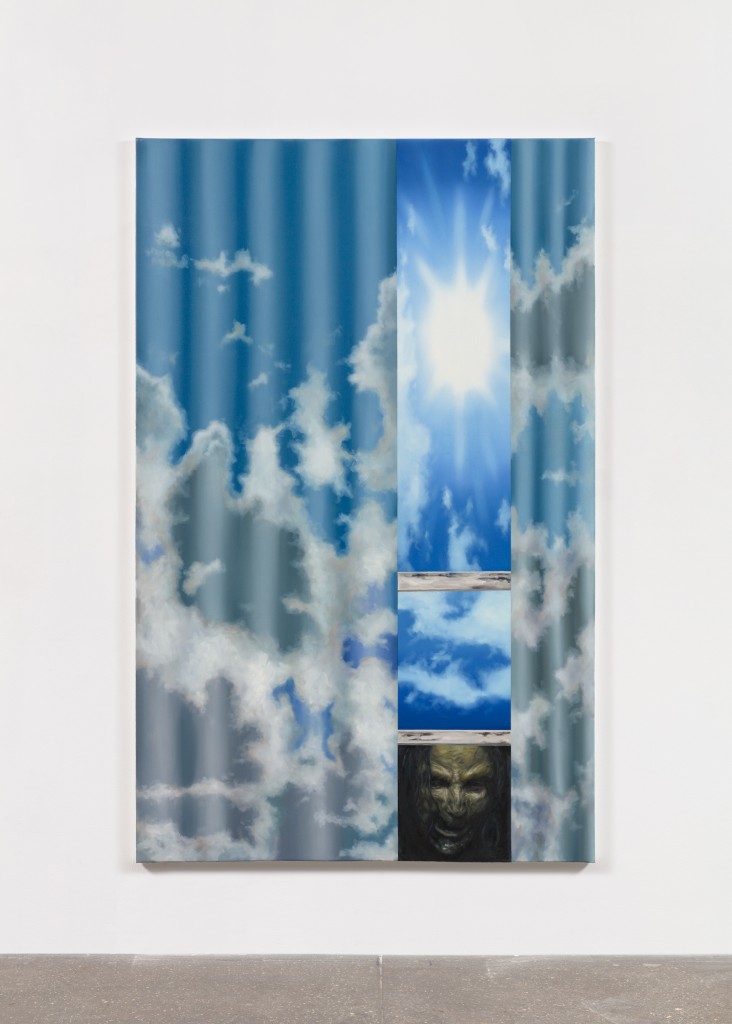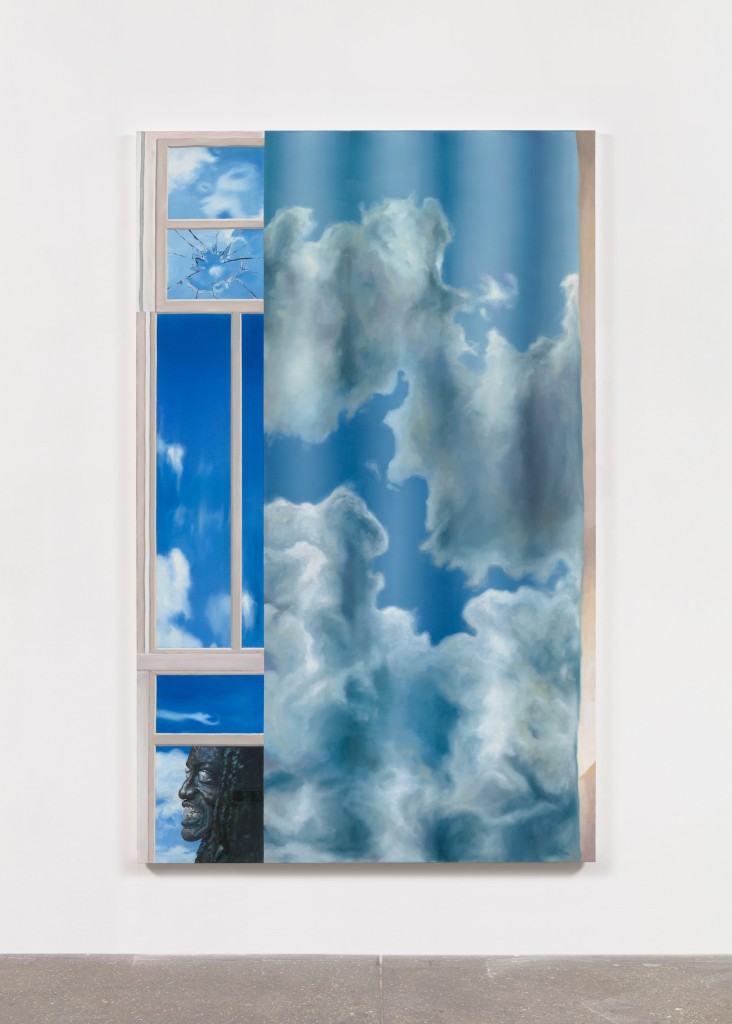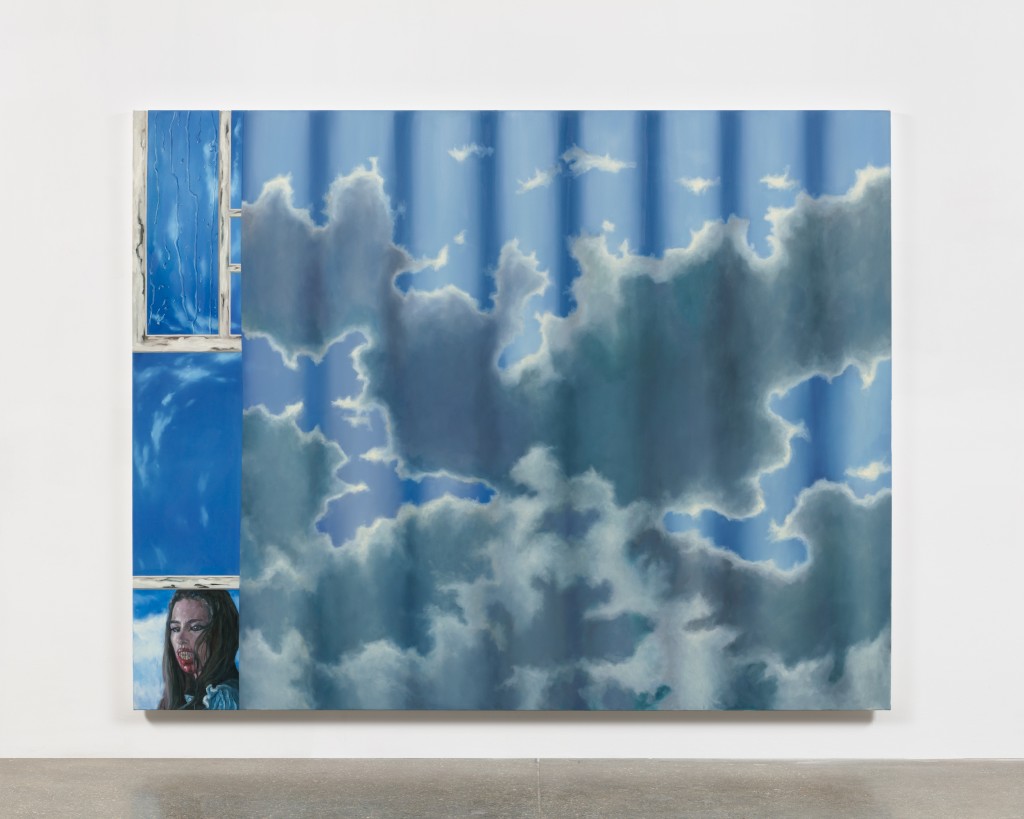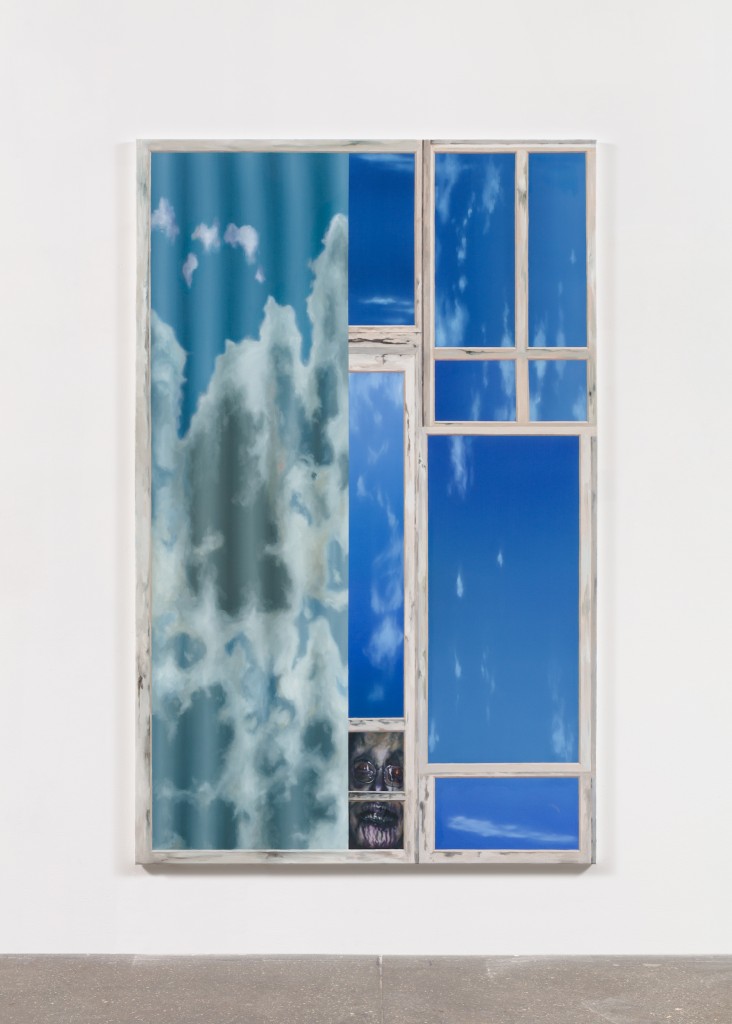Theology of a dead deity- zombie salvation
‘Theology of a dead deity – zombie salvation’ is a series of 5 paintings in which Robert Roest reflects in a visual way on mental processes having to do with belief, make belief, meaning and the creation, loss re-creation and ultimately inevitability of it. In the paintings, weathered or not window frames appear, through which we see far into blue skies and fleeting clouds, which don’t seem to follow the laws of nature. The weathered frames are organized in a loosely Mondrianesk fashion, which make them precisely anti-Mondrian since he was modernistic meticulous in composing his lines and geometric shapes. The clear blue skies give a sense of endlessness, far distance and space infinitely. Not one unified sky is seen behind the frames, but many fragmented skies, every fragment with its own potential of endlessness.
Curtains on which heavier clouds are seen obscure parts of the window frames and the views onto the distant skies. As if one layer of reality makes place for, or takes the place of, another reality. The illusion of space in the clouds filled curtains ís very illusory. The curtain, because right in front of the viewer also, or even more so, really so, obstructs and takes away space. The keen viewer realizes that perhaps all the depicted skies in these paintings are not really endless but also right in front. The subjectivity of the clouds is especially emphasized in the largest painting of the series ‘The Empath’, in which the dark cloud resembles a Rorschach test picture.
The clarity, light and views in these paintings don’t mean understanding, illumination or vision for the viewer or even maker, but rather the uncertainty or lack of it. ‘Nothing is certain and even that not’ as writer Multatuli paradoxically said. Is this an important insight or does this sweep every ground for an insight away? The statement in a sense undermines all meaning, and at the same time opens up a cloudy sky of meaning, precisely because the statement itself is meaningful.
The zombies that appear on the bottom of the paintings could be a metaphor for the meaning/no meaning paradox. Zombies are not dead, but not alive. They are probably the most meaningless modern mythic creature. If the zombie could be a symbol of meaninglessness, wouldn’t that make it precisely meaningful?
The paintings have a denseness in visual layers, symbol and meaning but because of the unclear character of them, they allow for an openness and interpretation for the viewer.
The Dutch word ‘eind’ comes to mind when looking to this series of paintings. Depended on the context in which the word is used it can mean either ‘end’ or ‘far’. End implies an obstruction, a stop, a not being able to go further. It’s a word that expresses finiteness. While ‘far’ implies an openness, a further, a potential, a beyond perhaps. The word expresses infinity.
The task of the benevolent viewer who is willing to take in these paintings slowly, is perhaps to mindfully entertain both opposing meanings in viewing this work.
Exhibition
